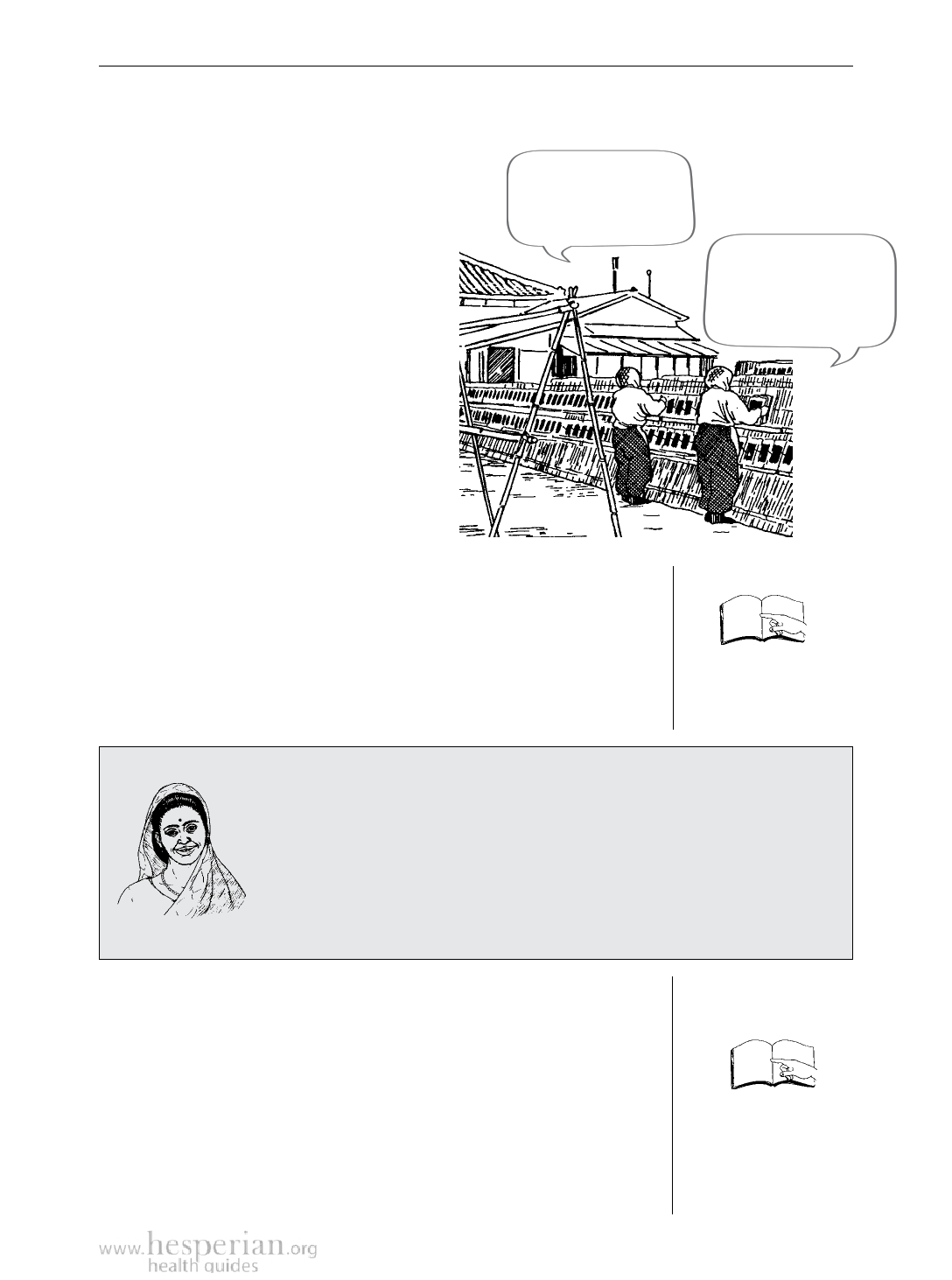
Working for Change 411
Teach each other about safety.
Women who have been doing the job
for a long time will have learned the
safest way to do things. Ask them to
share ideas about how to make the job
easier and safer.
My back hurts
more since I
started this job.
Help new women. New women
may be afraid to join your group,
especially if the employers do not
support you. But it is still important
to share your knowledge about safety,
because the safer every women is, the
safer you are.
Support each other. Many women
experience conflict at home when they
start working, because their role in the
family changes. Share advice on solving
family problems, and on balancing
housework and child care with paid
work. Some women even help take care of each other’s
children. They may organize a child care center, where one
woman is paid to care for young children so that others can
work. Or the women may take turns minding the children.
You might also try meeting together with men to discuss
women’s workload. For example:
Try just carrying
3 bundles at a time.
When I do that my
back doesn’t hurt
so much.
423
helping relationships
In workshops at the Center for Health Education,Training,
and Nutrition Awareness (CHETNA) in India, men and women are
asked to list their daily tasks. Many are surprised to learn that a
woman’s work day starts before a man’s does and ends long after
his, and that she rarely gets a chance to rest. This helped men to
see how work is distributed unfairly between men and women.
Then they were able to talk about dividing work fairly, based on
the needs of the family and not only by gender roles.
If you can, negotiate with your employer for better
working conditions, such as:
• higher wages.
• maternity leave (time off when a woman has a baby,
with the right to return to the same job).
• bathroom breaks.
• child care at work.
• a private place to remove breast milk by hand
(for mothers with babies).
111
when the mother
works outside the
home
Where Women Have No Doctor 2012